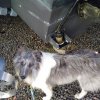EZZ70
Well-Known Member
hey gents, i am looking for some advise.... I think I have enough room for 2 Simrad evo3 7" in the dash or one 9" for sure, what ya all think I should do? 2 x 7" or 1 x 9"? thx
Also, what should I be looking at for transducers? I was thinking a 2 transducers a 3 in 1 and a p66, was thinking "in-hull" mounted transducers.
M260 http://www.airmar.com/productdescription.html?id=38
Plan on tuna/salmon/halibut/ground fish fishing...
Also, what should I be looking at for transducers? I was thinking a 2 transducers a 3 in 1 and a p66, was thinking "in-hull" mounted transducers.
M260 http://www.airmar.com/productdescription.html?id=38
Plan on tuna/salmon/halibut/ground fish fishing...




